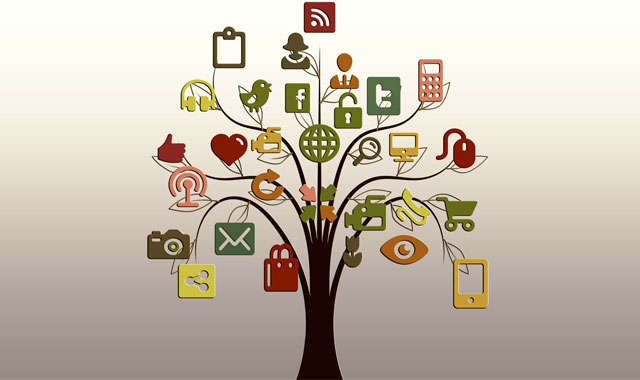 Later today, Amazon will lift the lid on the size of Amazon Web Services, or AWS, the behemoth cloud computing platform that seems to run half the planet. Well, at least a third, the other third belonging to Google and the rest split up between smaller players.
Later today, Amazon will lift the lid on the size of Amazon Web Services, or AWS, the behemoth cloud computing platform that seems to run half the planet. Well, at least a third, the other third belonging to Google and the rest split up between smaller players.
That “third” is a total thumbsuck, but the point is that neither is small — at all. It’s a long-running joke about how most of Amazon’s competitors are using its platform to run their businesses. Dropbox, the cloud storage maverick, uses AWS, as do Uber, Netflix (a direct competitor to Amazon’s video services) and Adobe.
Who knows what Google runs? At one point I heard it had the world’s largest private computer network and was renting server space to the Pentagon. That spiritual hymn about having the whole world in His hands was once about God. Now it’s about the cloud gods.
But I don’t want to talk about that. The Economist has a nice summary about the current cloud revolution, one I prefer to call XaaS — everything as a service — to avoid confusion. If you want the quick version: XaaS means hardware and software services are centralised on data centres and deployed in some fashion via a network like the Internet to client machines like laptops and smartphones. If you use Gmail, you use a SaaS (software as a service) solution.
People in business circles will notice that this is becoming the norm. XaaS makes sense on a lot of levels: it is cheap, manageable and vastly reduces barriers of entry. Today, a small business can access the kind of resource management, human resource and customer relationship tools once only affordable by giant firms. I’m a one-man show, but through Office 365 I have access to a basic Office suite the equivalent of any company I deal with. Plus it’s all stored online, so no desktop clients or painful backup regimes for me.
When we talk about the digital revolution, this is a big aspect of it. Often the impact of connectivity is summed up in some garish fashion: x percentage points added to GDP if you invest in connectivity today! Another version is usually found in “Internet of things” talk: x billion connected devices! Y zetabytes of data created! Big numbers mean staggering things!
All that stuff is mainly hot air best used for making pretty PowerPoint slides, because there is no real context. But that is a topic for another column. Yet they do contain some truth and this truth is one that South Africa is missing in a big way.
Somehow the world has been convinced that small business has to save our collective economic bacon. I agree that there is sense in this, but it feels a bit like scapegoating — a nice way for enterprises to lay people off. “Sorry, we have to downsize to save our profits, but just go open your own shop — problem solved!” Companies, politicians and pundits love this rhetoric, then some proceed to muse about the red tape stopping small companies.
Yet it’s talk that doesn’t walk the walk. A really big problem is the cost of data. Small businesses could save a mint and get some real advantages if they could afford a SaaS-based office suite, for example. The problem is they can’t. The services are not at fault — they are fairly cheap. The problem is the cost of the bandwidth to access them.
I use the most cost-effective fixed-line connectivity South Africa has to offer — ADSL — and my line rental alone is three times that of my SaaS services. And that’s not counting bandwidth.
The mobile operators are no better, asking grotesque amounts for connectivity. Worse, they just raised their prices. The logic was that prices would go down as the connected population grew. Now either that is not happening, or the connected population isn’t growing. Neither scenario paints a good picture.
This is a serious problem, but not a new one. For more than a decade, the high price of South Africa’s data has been an issue. Proponents of the free market assumed that competition would drive prices down, and in a way they did, but not by any meaningful measure. And now that trend is reversing.

But the rules have changed. Business needs cheap bandwidth and it needs it now.
Between greed, relentless profiteering, a lack of foresight from both operators and government, and a toothless regulator, South Africa’s business future has been sold down the river. We cannot afford to be spartan: bandwidth is as much a lifestyle choice as a practical catalyst.
I don’t believe anyone who can afford bandwidth for luxury use has the right to decree the poor should use data responsibly. All we are doing is prolonging general ignorance around the power of digital.
Take a stroll in Diepsloot or Orange Farm and ask people there what they think about bandwidth prices. They’ll tell you that data is an expensive luxury they can’t really afford.
The Internet Service Providers’ Association recently called for more serious action by government on broadband. Unfortunately, the understanding of the value of connectivity still eludes many people, especially in government.
To repair the situation requires leaders with vision. And if there is not some kind of intervention, it will be too late. We’ll have lost our window to get aboard the 21st century technology train.
If the world already runs on the likes of Amazon and Google, how exactly will we get on the bandwagon when we make the ticket price too high? The answer is, we won’t. We’ll stand on the side of the tracks as the train whizzes by.
- James Francis is a freelance writer whose work has appeared in several local and international publications
- Read previous columns by Francis




